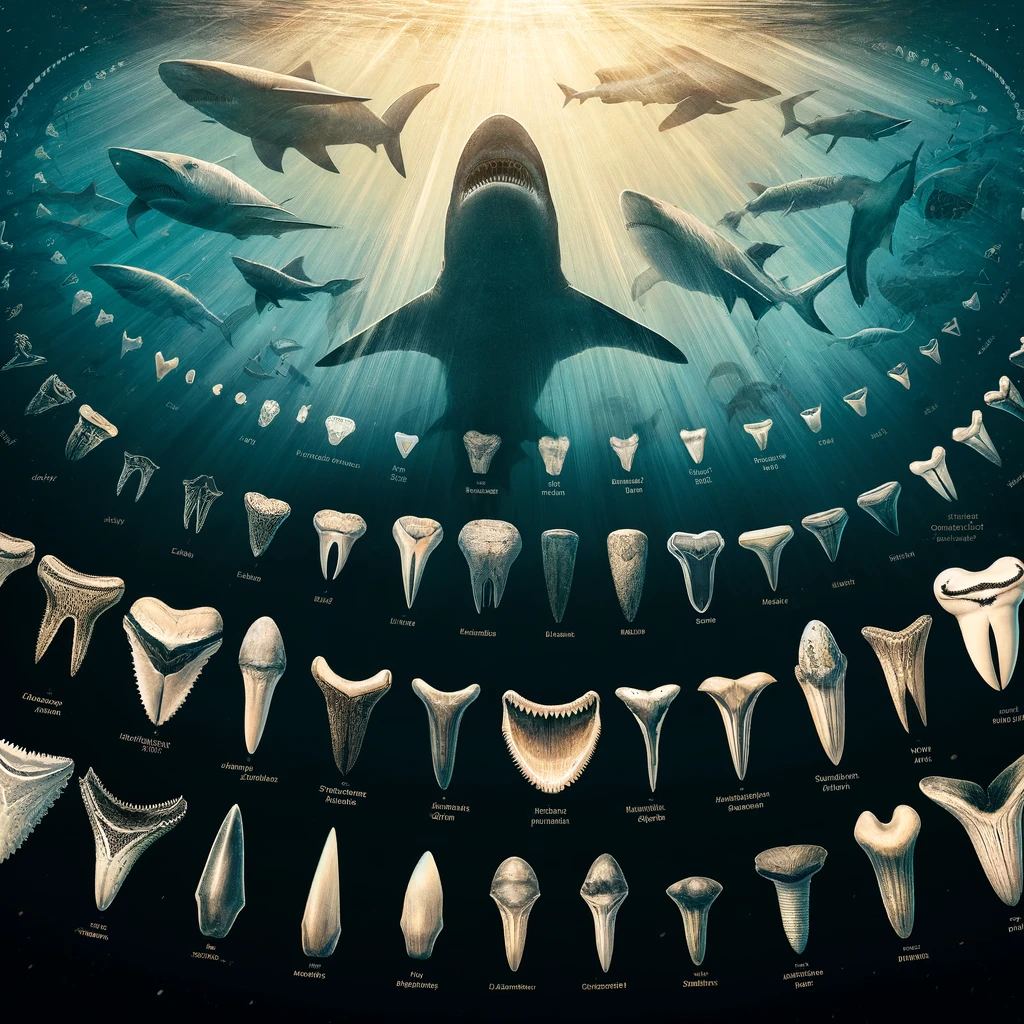Diving into the deep blue, one cannot help but marvel at the vast biodiversity of the ocean’s depths. Among its most fascinating inhabitants are the sharks, creatures that have roamed the earth’s waters for over 400 million years. While their role in marine ecosystems and their impressive evolutionary history are subjects of great interest, one aspect of their biology often captures the imagination of many: their teeth. But how many teeth do sharks have, and what makes their dental structure so unique?
Unlike humans and most mammals, sharks boast a dental feature that seems straight out of a horror or fantasy tale—they have an almost infinite number of teeth throughout their lifetime. On average, sharks can have anywhere from 5 to 15 rows of teeth in each jaw, with some species having as many as 50 rows. Great White Sharks can have up to 300 teeth at any given time. Due to this, a single shark can grow and shed over 30,000 teeth in its lifetime.
The number of teeth a shark possesses at any given time can vary significantly between species. For instance, the great white shark, one of the ocean’s most formidable predators, typically has about 300 teeth, arranged in multiple rows. When a front tooth falls out, one from the row behind it moves up to take its place, ensuring the shark’s bite is always ready for its next meal.
A Closer Look at Shark Teeth

Shark dentition reveals not just the biological intricacies of these apex predators but also the sheer power and versatility their teeth afford them. Shark teeth are nature’s perfect tools for predation, designed for efficiency and effectiveness in capturing and consuming a wide variety of prey.
The diversity in the shape and size of shark teeth across different species is a testament to their specialized diets and hunting strategies. For example, the serrated, triangular teeth of the great white shark are like nature’s steak knives, capable of tearing through the flesh of large mammals such as seals and dolphins with ease. On the other hand, the needle-like teeth of the mako shark are perfect for impaling fast-swimming fish, their main diet.
Sharks’ powerful jaws, combined with their formidable teeth, enable them to exert immense biting force. Great whites can produce a bite force of up to 1.8 tonnes per square inch (psi), allowing them to break through turtle shells and even puncture boat hulls. Meanwhile, the tiger shark, often dubbed the “garbage can of the sea,” uses its highly adaptive teeth to munch on a bizarre array of items, from fish and seals to tires and license plates, proving there’s little a shark’s teeth can’t destroy.
This destructive capability, however, is not senseless violence but a crucial aspect of marine ecosystems, showcasing sharks’ role as top predators in maintaining the ocean’s health and balance. Through their teeth, sharks ensure the vitality of their domain, one bite at a time.
Evolutionary Marvels

The teeth of sharks stand as a testament to the marvels of evolutionary adaptation, showcasing a lineage honed by millions of years of survival in the Earth’s vast oceans. Unlike most animals, sharks continuously grow and replace their teeth, a unique trait that ensures they are always equipped for predation. This evolutionary strategy has enabled sharks to remain at the top of the food chain, as their dental adaptability ensures their mouths are always ready for the next meal, whether it requires cutting, crushing, or holding onto slippery prey. This relentless cycle of renewal underscores the raw efficiency of nature’s design, ensuring that sharks remain among the most formidable predators in the marine ecosystem. Their teeth are not merely tools for feeding but symbols of the relentless drive towards survival, making sharks a fascinating subject of study in the ongoing story of life on Earth.
Conservation and Study
Shark teeth are not only fascinating for their biological functions but also for their role in understanding shark populations and health. Researchers study shark teeth to gain insights into their diets, hunting behaviors, and even migration patterns. Moreover, fossilized shark teeth provide valuable information about ancient marine ecosystems and the evolutionary history of these apex predators.
The exploration of shark teeth reveals not only the impressive adaptability and survival mechanisms of these ancient mariners but also underscores the incredible diversity of life beneath the waves. Sharks, with their various sets of teeth designed for specific dietary needs, exemplify nature’s ingenuity and the evolutionary processes that shape our world. Understanding the complexity of shark dentition offers us a deeper appreciation for these often-misunderstood creatures and highlights the importance of conserving marine biodiversity. As we continue to uncover the mysteries of the deep, let us remember the pivotal role sharks play in ocean ecosystems and the evolutionary marvels represented by each tooth in their powerful jaws. Their story is a testament to the resilience and intricacy of life on Earth, reminding us of the interconnectedness of all living beings and the enduring quest for survival in the vast, blue expanse of our planet’s oceans.


